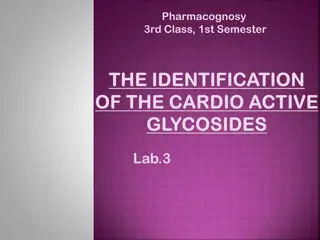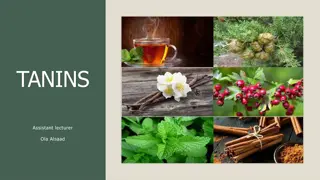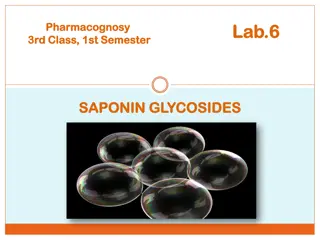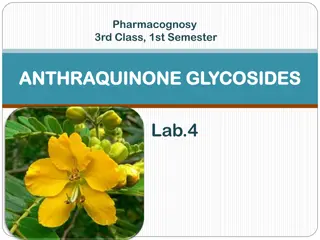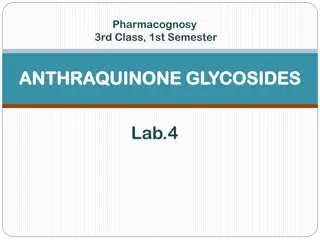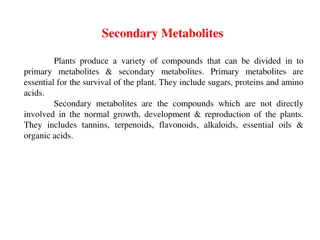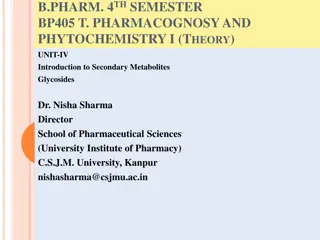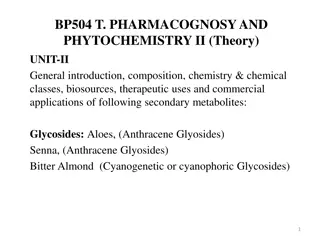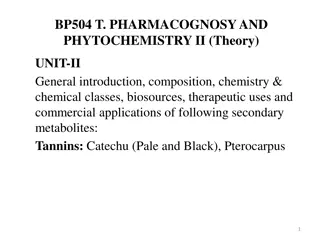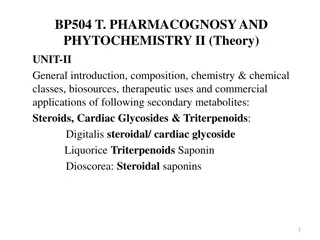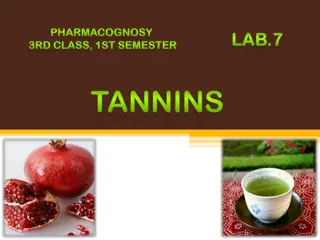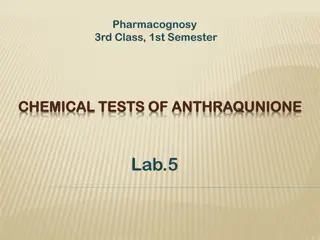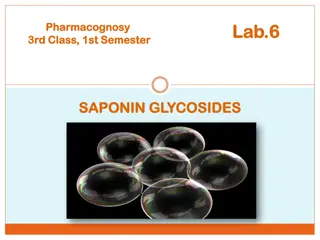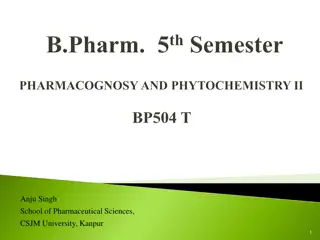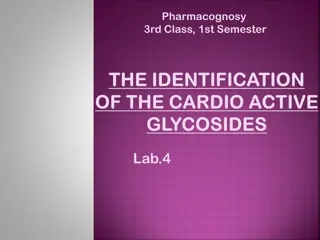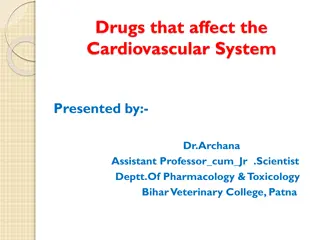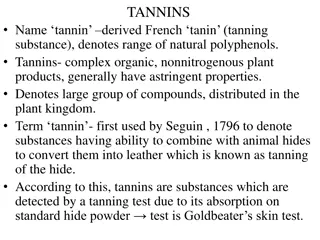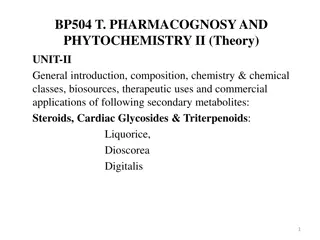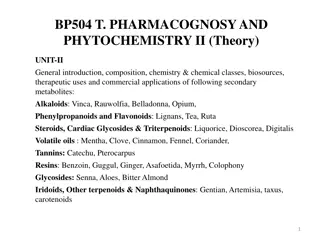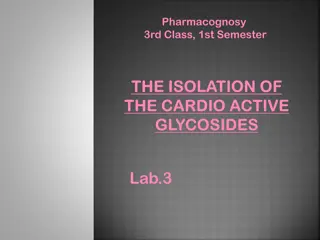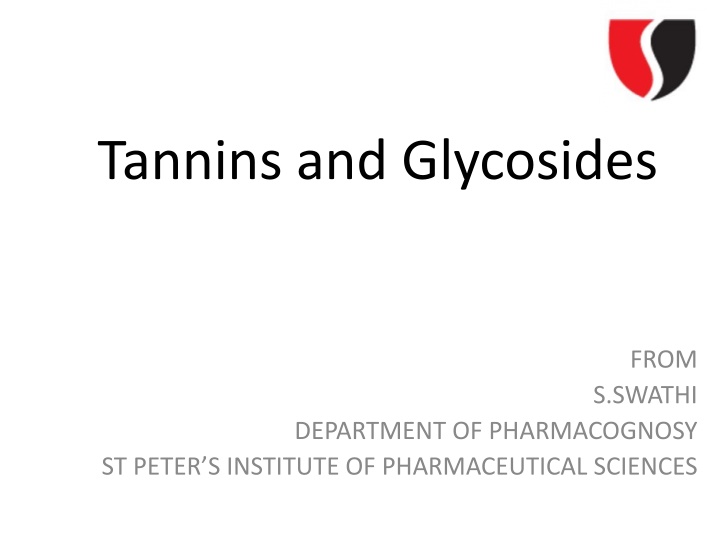
Tannins and Glycosides: Properties, Classification, and Uses
"Explore the properties, classification, chemical tests, and uses of tannins and glycosides. Learn about the occurrence, solubility, and identification methods for these important natural substances in plants. Discover how tannins act as astringents and antiseptics, while glycosides play essential roles as organic compounds in various sources." (Approximately 362 characters)
Uploaded on | 8 Views
Download Presentation

Please find below an Image/Link to download the presentation.
The content on the website is provided AS IS for your information and personal use only. It may not be sold, licensed, or shared on other websites without obtaining consent from the author. If you encounter any issues during the download, it is possible that the publisher has removed the file from their server.
You are allowed to download the files provided on this website for personal or commercial use, subject to the condition that they are used lawfully. All files are the property of their respective owners.
The content on the website is provided AS IS for your information and personal use only. It may not be sold, licensed, or shared on other websites without obtaining consent from the author.
E N D
Presentation Transcript
Tannins and Glycosides FROM S.SWATHI DEPARTMENT OF PHARMACOGNOSY ST PETER S INSTITUTE OF PHARMACEUTICAL SCIENCES
Definition Tannins are the most widely occurring group of natural substances in different families of higher plants. These are secondary metabolites present in the cell sap and also in distinct vacuoles. These are used as mild antiseptics, for the treatment of diarrhea and as an astringent. Chemically, tannins are mixture of complex organic substance in which polyphenols are present. They are high molecular weight substances.
Properties Tannins are colloidal solutions with water and non crystalline substances. They are soluble in alcohol, glycerin, dilute alkalis and are practically insoluble in organic solvents except acetone.
Classification of tannins There are of two types based on their chemical nature and dry distillation. 1. Hydrolysable tannins- Ex: Gallo tannins in nut galls, Myrobalans and pomegranate bark, clove, rhubarb. 2. Condensed tannins- Ex: Green tea, cinnamon bark, cocoa ,areca seeds, pale and black catechu.
Chemical tests Tannins are precipitated by salts of copper, tin and lead. They show color reaction with iron salts. Ferric chloride gives bluish black or brownish green color. Solution of tannins precipitates gelatin and alkaloids. Gold beater s skin test: to differentiate hydrolysable tannins and condensed tannins.
Uses of tannins Astringent Treatment of Diarrhea Mild antiseptic
Definition of glycosides These are the organic compounds from plants or animal sources which upon enzymatic or acid hydrolysis give one or more sugar moieties along with non sugar moiety. The former is called glycogen and latter is called as Aglyconeor genin. Chemically they are acetals or sugar ethers .
Classification of glycosides According to the nature of a glycone moiety: Antracene or antraquionone glycosides Saponin glycosides Cardiac glycosides Flavonoids glycosides Aldehyde glycosides Cyanogenetic glycosides Phenol glycosides Steroidal glycoalkaloids Glycosidal bitters
Classification based on linkage C-Glycosides O-Glycosides S-Glycosides N-Glycosides Classification based on Glycone part: Rhamnosides with rhamnose Pentosides with pentose
Method of Isolation and chemical tests Stas-otto Method is used for isolation of glycosides. Baljet test Born trager s test Keller-kiliani test for digitoxose
Uses of glycosides Cardio tonic Purgative Analgesics Anti ulcer Anti rheumatics

